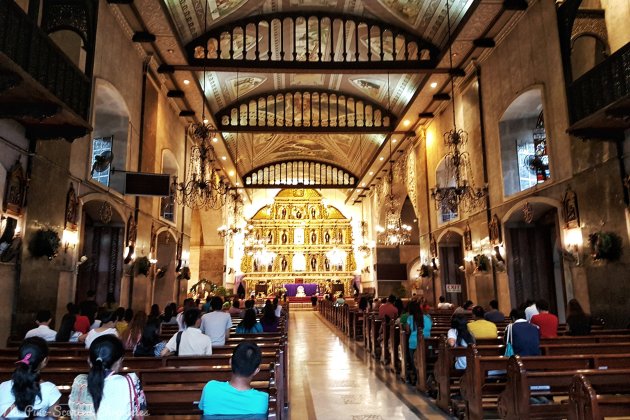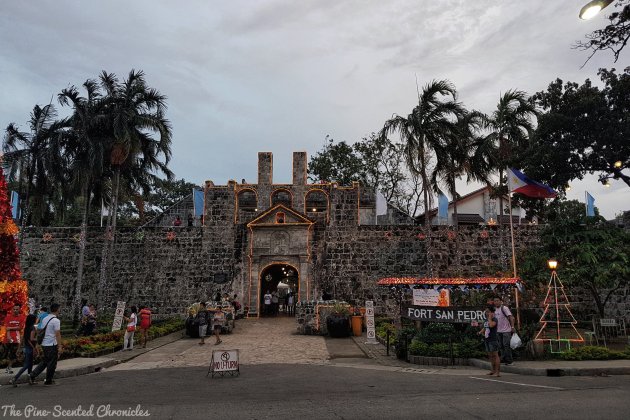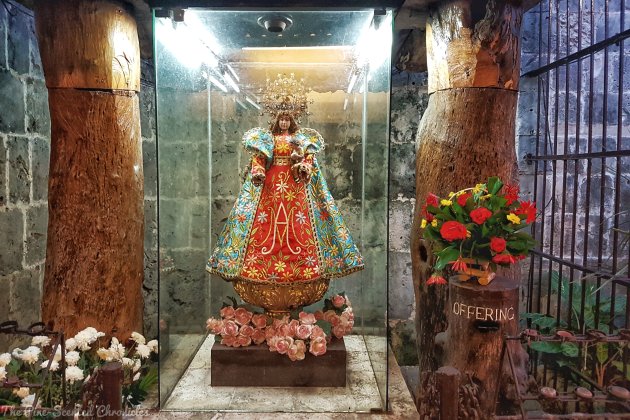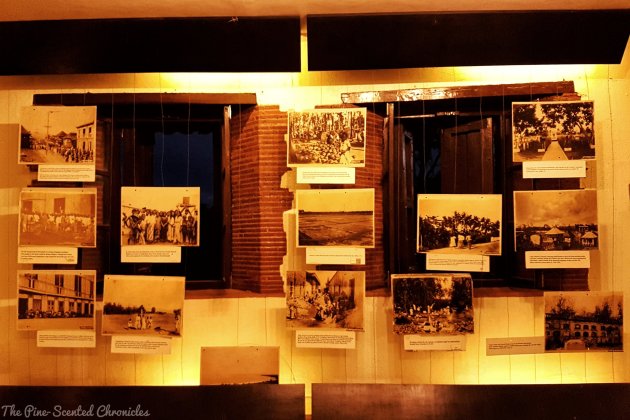
December 18, 2016
It was the day following our good friend’s wedding. Now, we are back to touring around. However, this part of our itinerary wasn’t firmed up. If I had been alone, I would probably be on my way to Bantayan Islands, one of the places I badly wanted to visit. But our time is short so we opted to simply roam around Cebu City, the capital of the province. Besides, I haven’t had a good glimpse of the city the last time I was here. So city tour it is.
My friends and I spent the morning resting first before moving back to our old accommodation (we changed accommodation the day before). So move again we did. After we have moved to our new accommodation, we begun our excursion in the afternoon. This is to our advantage as well as it was no longer as hot as it was earlier in the day.
Magellan’s Cross
Thankfully, one of our friends have already toured around the area before so he served as our guide. Our first stop is the historical Magellan Cross Shrine.
Cebu City, being one of the first communities to embrace and welcome Ferdinand Magellan and his vow of Christianity, is a historic site. Magellan’s Cross is amongst the numerous historical sites in the city. It is a symbolic site as, historically, it is seen as one of the symbols of the establishment of Roman Catholicism in the country. If you haven’t heard it yet, Philippines is the largest Catholic country in Asia.
On a Sunday afternoon, the place is a little bit crowded. Sunday, after all, is largely considered as a rest day, a day for the family. The crowd is unsurprising. Around the area, expect old women selling candles. As the place is sacred, it is customary to pray and offer candles for prosperity. It is not obligatory though.




The Oldest Church
A couple minutes’ walk from the monument is another symbol of the city, the Basilica Minore del Santo Nino de Cebu (or Santo Nino Basilica). Founded in 1565, it is the oldest Roman Catholic church in the country. The church stores more history as the place it was built was where the image of the Santo Nino de Cebu was found during the expedition of Miguel Lopez de Legazpi. This very same image is bannered during the Sinulog Festival, which is celebrated annually every January.
The Church and the Convent of Sto. Nino were both declared National Historical Landmarks in 1941. Even Vatican City has recognized the Church’s importance in the birth and spread of Christianity in the Philippines.
When we dropped by, a mass was in progress. The mass astonished me as it was held on two sites, one outdoors (in front of the Pilgrim Center), and one indoors (in the main church). Both masses were held simultaneous. This is understandable as there are scores of devotees who lined up to hear the word of the Lord. Moreover, it is Simbang Gabi season, hence the flock.



The structure itself is amazing even though it received some damage due to a devastating earthquake a couple of years before. Apart from the main church and the Pilgrim Center church, there are other features that one can tour in the church complex. A museum is situated at the ground floor of the Pilgrim Center. The museum features relics and statues of different saints, old vestments of priests, and replicas of the city’s patron saint, Sto. Nino (pretty much the same as the Boljoon Church Museum). The church also has its own library that has a collection of books that cover both religious and non-religious disciples. Unfortunately, we missed both.
If you do drop by the Church, don’t forget to drop by the Gift Shop. The shop sells different religious mementos, relics, and trinkets. Replicas of Sto. Nino are being sold as well. If you’re in luck, you can have your purchases be blessed during the Mass. Before leaving the Church, light a candle and mutter a short prayer for you, for your friends, for your family, and for the world.



The Smallest Fort
Another historical spot not to be missed while in Cebu City is Fort San Pedro (or Fuerte de San Pedro). The original structure was made of wood and was built under the command of Miguel Lopez de Legazpi. In 1738, to repel Muslim invaders, the wooden structure was reinforced with stones, also the present structure visitors can see today. Fuerte de San Pedro is the oldest triangular bastion fort in the country.
Located in Plaza Independencia, the fort is fortunately within a walking distance of Sto. Nino Church. It has an imposing façade and presence. However, one thing stood out – its size. When they said fort, I was expecting one as big as Manila’s Intramuros. But I was wrong. As we were touring around the fort, I have learned that aside from being the oldest triangular bastion fort, it is also the smallest fort in the country. Fascinating!





Unlike our other stops, we had to pay a minimal fee of PHP to gain entrance to the historical defense structure. A far cry from its old defense stronghold days, the fort is now converted into an open-air museum. There is also a gallery inside the old structure. The gallery features portraits of prominent Philippine historical figures. Just like Intramuros, old cannons used back then are on display.
Each wall of the old structure resonated with history. The playful mind can easily picture battalions of soldiers marching around its empty hallways. The sounds of their well-timed and disciplined marching echo around the fort’s aged structure. The spirits of these soldiers reverberate all around the hall. I wonder what kind of nocturnal activities happen after the Museum’s doors close.
Managed by the city government, the fort and the museum is open from 7AM to 7PM.




A City in Lights
Before heading back to our accommodation, we first had dinner as it was already getting dark. From the Plaza, we walked back to the Sto. Nino Church as the jeepney station is close there. To go there, we took a different direction from the one we used to go to the Plaza. We skirted around another Church, the Cebu Metropolitan Cathedral. A mass was ongoing, but it was lit up for the holiday seasons.
Cebu City, I surmised, is like any other city in the country during the holiday season – propped up. Oh well, we Filipino holiday experience is certainly a world apart from the traditional holiday experience. Not only is it longer (it starts from September), but cities and towns all over the country are all propped up for the special celebrations in the days ahead.
After a long day, we settled down as we still have one more day to explore the city.

More images from the gallery of Fort San Pedro.




